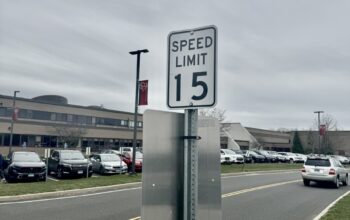
Julia Harvey
Reporter
For the past couple of years, many students and faculty have found their classrooms less than comfortable when it comes to temperature. Some classrooms are hot and some are cold. Why this inconsistent pattern?
Sean Killelea, a math teacher at NCHS, described his classroom temperature. “It’s definitely warmer than last year. Last year, I would need to come in a parka and a knit hat.”
Freshman Alyssa Thompson concurred. “Ms. Cohen’s classroom is really hot,” she said. “But it is so cold everywhere else, I have to lug around so I can be comfortable…”
According to Alyssa, however, temperature affects her more than her attire. “[The temperature] makes it really hard to focus and makes everyone unhappy,” she said.
Junior Drew Goldsholl agreed that heat in some classrooms can pose as a distraction. “People are sitting there trying to cool off instead of listening.”
We all know that temperatures in the school are always changing, but why is the temperature so inconsistent? “[Temperature] can be affected when someone leaves a door open,” Chris Tensen, a custodian at NCHS said. “[Temperatures] are dialed up on a computer. If someone leaves a door open to the outside, it throws off the plenum because of the air coming in. If cold air enters a room, [the thermostat]will call for more heat,” he said.
Mr. Tensen explained that because the school is divided into zones that are heated separately, many classroom temperatures is influenced by one open door.
Temperature maintenance is one of Assistant Principal Larry Sullivan’s many responsibilities. “I don’t work with any equipment,” he said. “People report to me about concerns, and then I talk to custodians, sometimes bringing in other maintenance officers.”
“In January of 2009, the superintendents sent us a directive on building temperature,” he said. “Specifically, the temperature that should be maintained in the heating season, which is from mid-October to mid-April, is 68 degrees. During the summer, the temperature should be 76 degrees.”
Why this set temperature? “In the fall of 2008, fuel costs were incredibly high. [The temperature change] was really something Dr. Abbey instituted to save costs,” Mr. Sullivan said.
According to Mr. Sullivan, special permission is necessary in order to change the temperature. “It’s a means to try to control cost and how much fuel were using,” he said.
Mr. Sullivan added that the location of the room to outside walls also contributes to temperature. “Rooms with windows tend to be cooler. The computer labs have no doors to the outside, no windows, and no outside walls. Automatically, that room is going to get warmer. Throw 20-25 computers in there, and the temperature will go up.”
“When a room is significantly hot or cold, we try to find a way to make temperature better,” Mr. Sullivan said.
When asked the advice he would give to the students and faculty to insure their comfort in the temperature of the school, Mr. Tensen said, “Wear a light shirt and bring a sweater, and when you leave the building, close the door behind you.”
Mr. Sullivan agreed. “What I would say is to let the main office and I know, because we want to make the building comfortable,” he said. “I would suggest carrying a jacket or a sweater. If there is a consistent problem, I want to try to deal with it.”



